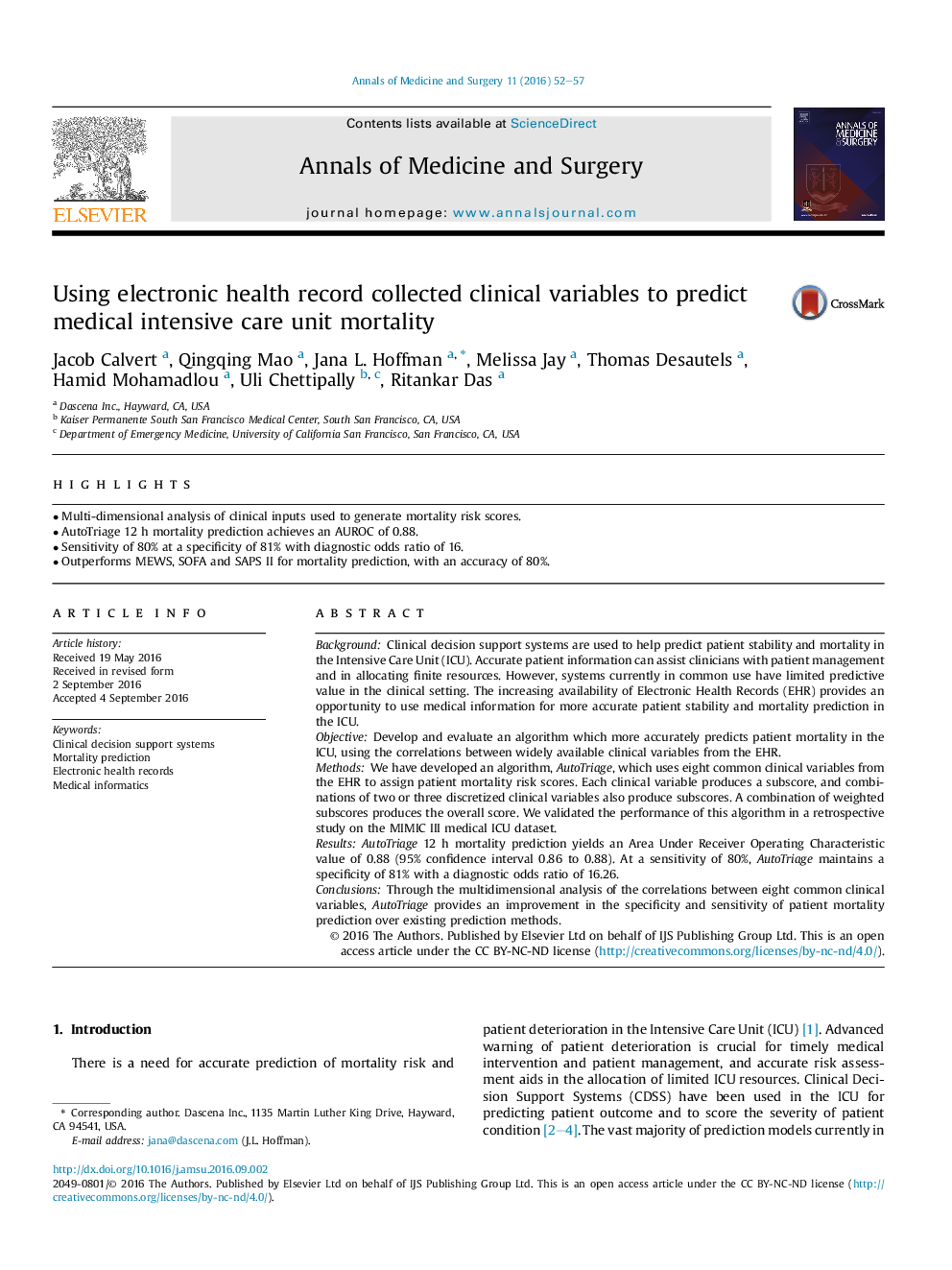| Article ID | Journal | Published Year | Pages | File Type |
|---|---|---|---|---|
| 4195107 | Annals of Medicine and Surgery | 2016 | 6 Pages |
•Multi-dimensional analysis of clinical inputs used to generate mortality risk scores.•AutoTriage 12 h mortality prediction achieves an AUROC of 0.88.•Sensitivity of 80% at a specificity of 81% with diagnostic odds ratio of 16.•Outperforms MEWS, SOFA and SAPS II for mortality prediction, with an accuracy of 80%.
BackgroundClinical decision support systems are used to help predict patient stability and mortality in the Intensive Care Unit (ICU). Accurate patient information can assist clinicians with patient management and in allocating finite resources. However, systems currently in common use have limited predictive value in the clinical setting. The increasing availability of Electronic Health Records (EHR) provides an opportunity to use medical information for more accurate patient stability and mortality prediction in the ICU.ObjectiveDevelop and evaluate an algorithm which more accurately predicts patient mortality in the ICU, using the correlations between widely available clinical variables from the EHR.MethodsWe have developed an algorithm, AutoTriage, which uses eight common clinical variables from the EHR to assign patient mortality risk scores. Each clinical variable produces a subscore, and combinations of two or three discretized clinical variables also produce subscores. A combination of weighted subscores produces the overall score. We validated the performance of this algorithm in a retrospective study on the MIMIC III medical ICU dataset.ResultsAutoTriage 12 h mortality prediction yields an Area Under Receiver Operating Characteristic value of 0.88 (95% confidence interval 0.86 to 0.88). At a sensitivity of 80%, AutoTriage maintains a specificity of 81% with a diagnostic odds ratio of 16.26.ConclusionsThrough the multidimensional analysis of the correlations between eight common clinical variables, AutoTriage provides an improvement in the specificity and sensitivity of patient mortality prediction over existing prediction methods.
